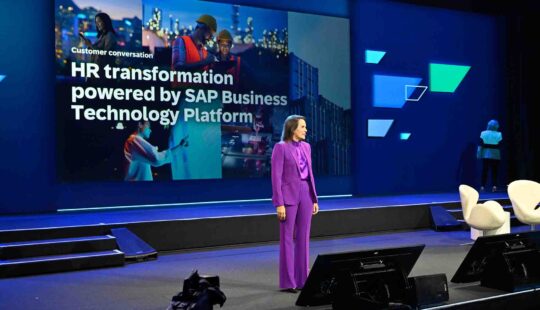Even before the pandemic began to show signs of waning, the data was clear: people were growing tired of their jobs and suffering burnout. Now, as infection rates are dropping, new reports are emerging each week about the talent flight crisis taking hold.
Record numbers of women have already left the workforce to take on familial and care duties during the pandemic and one in four people plan to leave their jobs once the pandemic ends – many already have. However, the proverbial crystal ball needn’t be right if HR leaders use this rare and unique opportunity to address employee well-being.
But how? There are several ways, all addressed in the SAPPHIRE NOW session “HR 110: Prioritize these HR trends now that the future of work has arrived” presented by SAP SuccessFactors Chief Scientist Dr. Autumn Krauss. The eight meta-trends she explored in the session were derived from 267 individual trends identified and researched further by SAP psychologists. Those who acknowledge and address these trends sooner rather than later, Krauss explained, will enjoy stronger, more resilient and agile organizations where people thrive – and want to stay.
One meta-trend, “renewed emphasis on holistic well-being,” speaks to the issue directly. It’s now more critical than ever for HR leaders to identify and work with employees on specific physical, mental, financial, and social well-being stressors in a holistic manner and across the entire employee life cycle.
The other seven meta-trends, however, ladder into the importance of providing a safe, inclusive place to work, where people believe they can learn and grow.
Here are the other seven meta-trends and a quick look at how they connect to – and magnify – the importance and value of investing in employee well-being.
1. Rise of the Hybrid Workforce
We learned that hybrid work is both possible and profitable. But moving forward, organizations must create a playbook to ensure that a cultural rift doesn’t widen between corporate workers, who generally have flexibility to work remotely, and field workers, who do not. In a two-tier work culture, employee well-being will prove inconsistent.
2. Employees Owning Their Learning and Mobility
Learning and development initiatives aren’t just key to agility – they’re key to retention. People want to stay where they feel valued, as signified by the organization’s investment in their career development. Along with creating a culture of learning, technology will be essential in delivering a more positive learning experience so people can take ownership of their future.
3. The Purpose-Driven Organization
Now more than ever, companies are needing to walk the talk and prioritize issues of social justice, even working them into their strategies. When companies invest in advancing diversity, equity, and inclusion (DEI) and sustainability efforts into business strategy, people will see and feel results that motivate them.
4. HR in the Spotlight
HR earned considerable political capital since the start of the pandemic when it helped the C-suite formulate a COVID-19 response and also helped people navigate it. Now’s the time to spend that capital on using evidence-based decision-making and a sound talent strategy to work in lockstep with the wave of workforce and digital transformation initiatives on the horizon.
5. Balancing Data Intelligence with Data Privacy
For the foreseeable future, digital technology will be leveraged to improve the employee experience – but data tracking and privacy will become more important topics as a result. No amount of digital transformation to improve the employee experience will matter if HR can’t simultaneously address people’s concerns about their privacy.
6. Individualizing the Employee Experience
Just as the Starbucks app knows how you like your latte and can predict what else you may like, HR technology needs to provide the same level of personal, individualized experience. The more people feel that they’re getting a consumer-grade experience at work, one that taps into their hopes and ambitions and addresses their pain points, the happier and more motivated they’ll feel. But organizations can’t just collect data, they need to act on it appropriately to curate impactful experiences.
7. Agility: From Buzzword to Business Imperative
Among other things, COVID-19 taught many companies that they’re too slow to react to disruption. By addressing their people practices, however, and building resilience and agility on the individual level through enhancing employee well-being, organizations will be able to break up traditional hierarchical structures. This will allow them to understand the workforce’s change readiness, change capacity, and resilience – and better anticipate, endure, and even capitalize on future disruptions.
All these meta-trends speak to a simple, straightforward ideal: the more organizations directly address the various facets of well-being, and do so on a personal, individual level, the more likely it is that engaged, motivated people will stay and give their best. Nail well-being and the business will be much healthier, too.
To learn more, check out SAP SuccessFactors Human Experience Management (HXM) Suite or replay the SAPPHIRE NOW presentation.
Lauren Bidwell, Ph.D., is a senior research scientist at SAP SuccessFactors.



